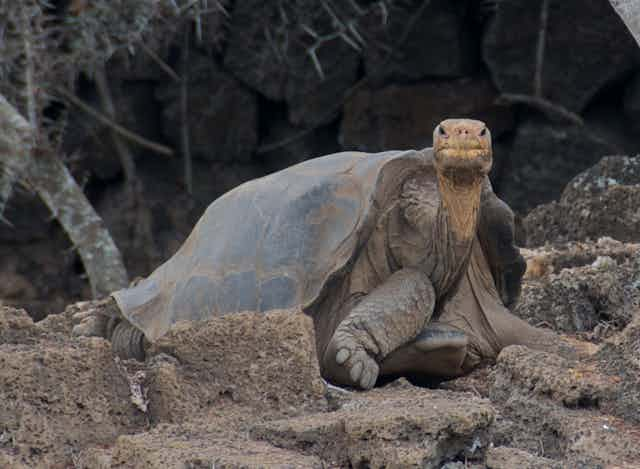There can be few words as poignant as “endling”, the name given to the last surviving individual of a species. The picture (below) of Benjamin, the last Tasmanian tiger or thylacine, is heartbreaking. The plight of Lonesome George, the last Pinta Island tortoise, or Martha, the last passenger pigeon is moving.

What links all of these endlings is that we know they were once members of a thriving population - in Martha’s case, one of the most abundant vertebrate species on the planet. There are other species which are known only from a single individual. These “singletons”, perhaps lack the poignancy of endlings but are arguably more significant to the study of biodiversity.
Singletons are to be expected when your survey area is small, or if you look for only a short period of time. If I counted the birds in my garden for an hour tomorrow morning, I will no doubt find multiple individuals of a few species - magpies, wood pigeons, house sparrows - but it would be surprising to see more than one sparrowhawk or wren. However, if I extended my search to the whole street, or to the whole of Sheffield, the number of singletons would drop off precipitously. And at the scale of the whole country, over the course of an entire summer, any breeding bird species by definition must be represented by at least two individuals. So there should be no singletons at all in the birds of a region. Any that remain can be dismissed as shivering vagrants from a far away land, mere ornithological curiosities that are ecologically insignificant.
Enter the sea, though, and the number of singletons remains stubbornly high, even when we expand enormously our study region. For instance, in an analysis of European benthic invertebrates I did a few years ago, I found that about 10% of the species in our very large database (2,300 species sampled from more than 15,000 locations throughout European seas) were singletons. Similar patterns appear in the Ocean Biogeographic Information System (OBIS), which is the largest compendium of occurrence data for marine species. OBIS contains records for more than 11,500 species occurring in the seas around Britain, yet over 45% of these are represented by only a single record. At the global scale, 20% of the almost 80,000 marine animal species which occur in OBIS are singletons.
I am aware of biases in recording such numbers in big databases like OBIS, but if we assume that singletons really do represent rare species, then what might the consequences of this be for ecosystems? Singletons collectively can be an important component of a system. But Kevin Gaston, a biodiversity expert at the University of Exeter who has written on the dominance of common species, argues that in most instances it is common species that underpin the ability of ecosystems to function.
Important cog in the wheel

However, a new analysis just published in the journal PLOS Biology questions this assumption. David Mouillot, at the National Center for Scientific Research in France, and his coauthors have analysed three species-rich communities: coral reef fish, alpine plants and tropical trees. Each species was assigned a “functional distinctness” value, based on how different its biological characteristics are from other members of the community. In all three systems, the most distinctive species are always rare, often falling into the singleton class.
This means that a whole set of potential ecosystem functions are vulnerable if rare species go extinct. In other words, for every singleton that becomes an endling, we risk losing a unique combination of biological characteristics and, potentially, a distinct role they played in the ecosystem.
This study takes into consideration only three well-known communities, so we might have to wait before we can generalise these results. What we know from observations about rare marine species is that we know so little about their biology. We cannot yet assess the importance of the role they play in an ecosystem.
As part of British Ecological Society’s centenary this year they asked ecologists 100 big questions. Question #55 was: How important are rare species in the functioning of ecological communities? Mouillot’s study suggests that answer is: very important.
There is lots of work still to do before we can proclaim this answer with confidence. But we must hope that the singletons we find in our surveys are only statistical loners, the first observed rather than the last remaining individual. If they do in fact represent the Benjamins, Marthas and Lonesome George of their kind, then the planet’s biodiversity is in more trouble than we thought.
Bits of this article were first published on Tom Webb’s blog.

